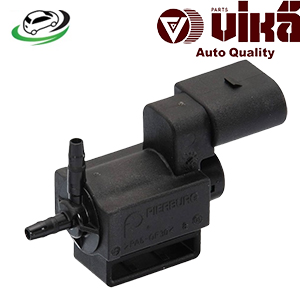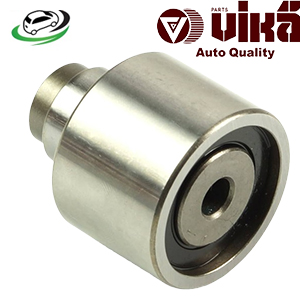-6%
Get VW Golf III (1H1)/ Vento (1H2)/ Passat B3/B4/ Golf IV Cabriolet/ Sharan Van (7M)/ Golf III Van Crankshaft Crank Position Sensor 037906433A
A crankshaft position sensor is a device that provides information about the position and speed of the crankshaft in an internal combustion engine. It helps the engine control unit (ECU) determine the exact timing for fuel injection and ignition, ensuring the engine runs efficiently and effectively. The CKP sensor works in conjunction with the camshaft position sensor (CMP sensor) to provide precise data about the engine’s position.
Key Functions of the Crankshaft Position Sensor:
- Engine Timing: Determines the position of the crankshaft to optimize fuel injection and ignition timing.
- RPM Monitoring: Measures the rotational speed of the crankshaft, allowing the ECU to adjust engine parameters accordingly.
- Diagnostics: Provides data that can be used for diagnostic purposes, helping to identify potential engine issues.
2. Types of Crankshaft Position Sensors
Crankshaft position sensors can be categorized based on their sensing technology. The most common types include:
1. Magnetic Inductive Sensors:
- Operation: These sensors use magnetic induction to generate a voltage signal as the crankshaft rotates. A toothed wheel or reluctor ring attached to the crankshaft interrupts the magnetic field, creating a pulse signal that corresponds to the crankshaft’s position.
- Applications: Widely used in various vehicles due to their reliability and durability.
2. Hall Effect Sensors:
- Operation: Hall effect sensors utilize a magnetic field to produce a voltage output. A magnetic ring or gear is mounted on the crankshaft, and as it rotates, the sensor detects changes in the magnetic field and generates a corresponding signal.
- Applications: Commonly found in modern vehicles, these sensors are known for their accuracy and quick response times.
3. Optical Sensors:
- Operation: Optical sensors use light to detect the position of a notched wheel or disc attached to the crankshaft. A light source (usually an LED) shines on the disc, and a photodiode detects the light interruption as the notches pass by.
- Applications: Less common than magnetic or Hall effect sensors, they are typically used in high-performance applications where precision is crucial.
3. Working Principle of the Crankshaft Position Sensor
The working principle of a crankshaft position sensor depends on its type. Here’s a breakdown of how the most common types operate:
1. Magnetic Inductive Sensor:
- Toothed Wheel: A toothed wheel is connected to the crankshaft. As the crankshaft rotates, the teeth pass by the sensor.
- Induction Process: The sensor generates an AC voltage signal based on the change in the magnetic field as the teeth pass by.
- Signal Interpretation: The ECU interprets the frequency and amplitude of the signal to determine the crankshaft’s position and speed.
2. Hall Effect Sensor:
- Magnetic Field: A magnetic ring is mounted on the crankshaft, providing a magnetic field to the sensor.
- Signal Generation: As the crankshaft rotates, the sensor detects changes in the magnetic field and generates a square wave voltage signal.
- Data Transmission: The ECU receives the signal and calculates the crankshaft’s position and RPM based on the pulse frequency.
3. Optical Sensor:
- Light Source and Detector: The sensor consists of an LED (light source) and a photodiode (light detector).
- Notched Disc: A notched disc is attached to the crankshaft. As the crankshaft rotates, the disc interrupts the light beam.
- Signal Generation: The photodiode generates a voltage signal based on the interruptions in the light, which is then sent to the ECU for processing.
4. Applications of Crankshaft Position Sensors
Crankshaft position sensors are widely used in various applications, including:
1. Automotive Industry:
- Engine Management Systems: CKP sensors are integral to modern engine management systems, enabling precise control of fuel injection and ignition timing.
- Diagnostics: They provide valuable data for diagnosing engine performance issues and improving emissions control.
2. Motorcycle Engines:
- Performance Tuning: In motorcycles, CKP sensors help optimize performance and fuel efficiency, particularly in high-performance models.
3. Heavy Machinery:
- Diesel Engines: CKP sensors are used in diesel engines for heavy machinery and commercial vehicles to monitor crankshaft position and ensure efficient operation.
4. Marine Applications:
- Boat Engines: CKP sensors are employed in marine engines to maintain optimal performance and fuel efficiency.
5. Advantages of Crankshaft Position Sensors
The use of crankshaft position sensors offers several advantages:
1. Precision Control:
By providing accurate data on crankshaft position and speed, CKP sensors enable precise control of fuel injection and ignition timing, enhancing engine performance.
2. Improved Fuel Efficiency:
Optimizing fuel injection timing based on real-time data helps improve fuel efficiency and reduce emissions.
3. Diagnostic Capabilities:
CKP sensors provide valuable data for diagnostics, helping identify potential issues in the engine management system and facilitating timely repairs.
4. Enhanced Engine Performance:
With accurate crankshaft position monitoring, engines can achieve better acceleration, smoother operation, and overall improved performance.
5. Reliability:
Modern CKP sensors are designed to withstand harsh operating conditions, including extreme temperatures and vibrations, ensuring reliable performance.
6. Maintenance of Crankshaft Position Sensors
While crankshaft position sensors are generally low-maintenance components, ensuring their proper functioning is essential for optimal engine performance. Here are some maintenance tips:
1. Regular Inspections:
Inspect the sensor and its wiring periodically for signs of wear, damage, or corrosion. Look for loose connections or frayed wires.
2. Cleanliness:
Keep the sensor and surrounding area clean to prevent dirt and debris from affecting its performance. Ensure that any sealing gaskets are in good condition to prevent contaminants from entering.
3. Electrical Checks:
Test the electrical connections to ensure proper voltage supply to the sensor. Use a multimeter to check for continuity and voltage output while the engine is running.
4. Replace When Necessary:
If the CKP sensor is found to be faulty during inspection or testing, replace it promptly to avoid performance issues. Look for signs of failure, such as erratic engine behavior or trouble codes related to crankshaft position.
5. Professional Diagnosis:
If engine performance issues arise, consider seeking professional diagnostic services to accurately identify and resolve CKP sensor-related problems.
7. Conclusion
The crankshaft position sensor is a vital component in modern engine management systems, providing essential data for optimizing performance, fuel efficiency, and emissions control. By understanding the various types, working principles, applications, advantages, and maintenance practices associated with CKP sensors, vehicle owners and technicians can ensure their vehicles operate at peak efficiency. As technology continues to advance, the role of crankshaft position sensors in enhancing engine performance and reliability will remain crucial in the automotive industry and beyond.
Follow us on Facebook for more parts.




Reviews
Clear filtersThere are no reviews yet.